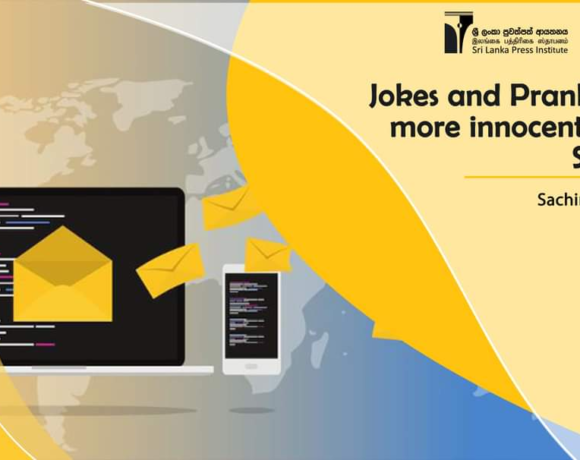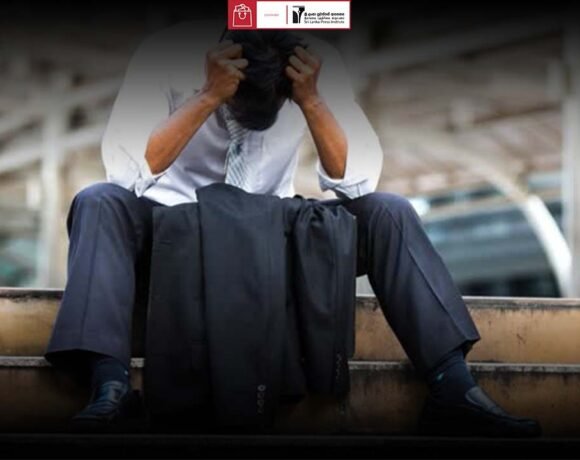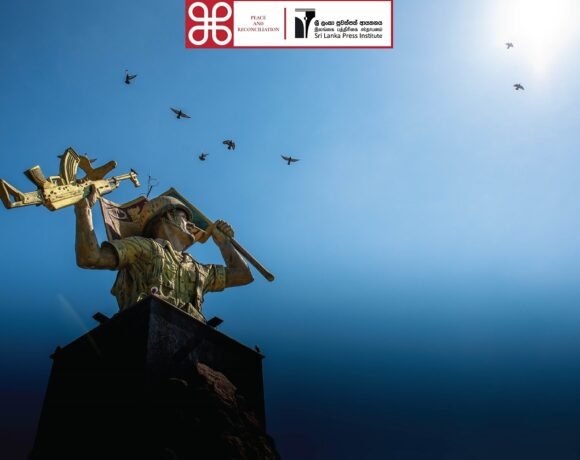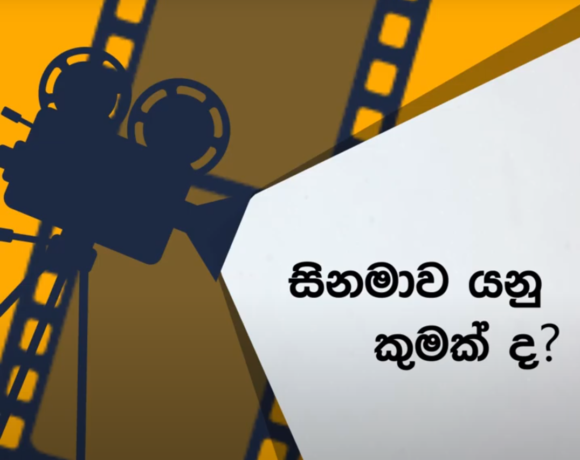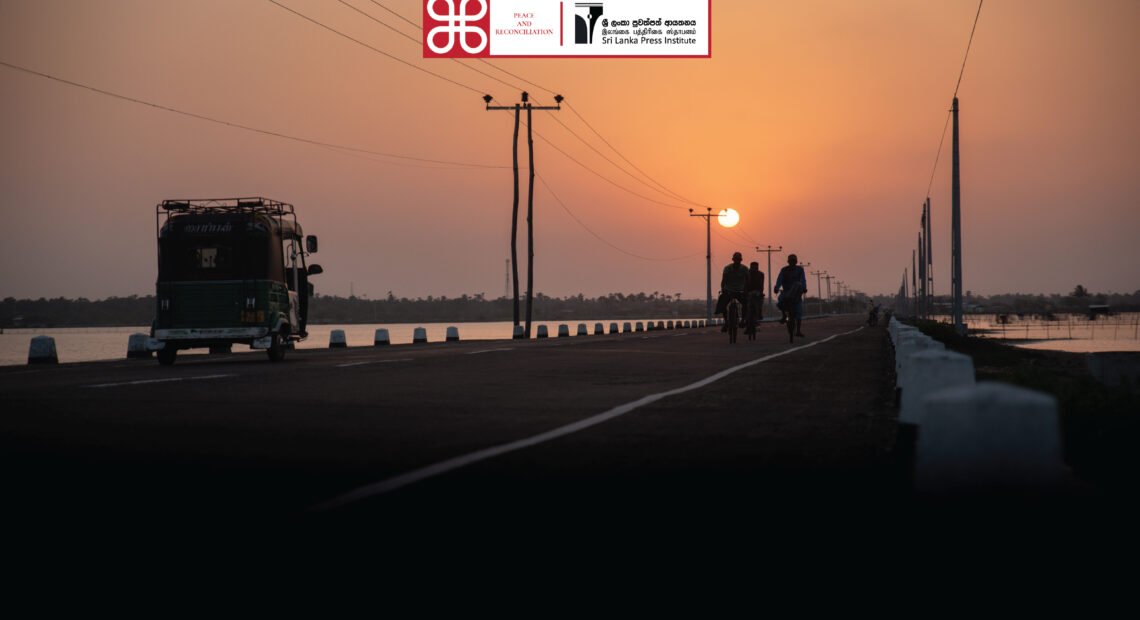
Peace-building in Sri Lanka: The Path Taken and the Path Ahead
Ajith Perakum Jayasinghe
When I became involved in the peace movement during the 1994 Presidential Election, I entered a discourse with a difference concerning Sri Lanka’s ethnic problem. This movement was led by the Sri Lanka Freedom Party (SLFP), its Left allies, non-governmental organizations, trade unions and civil society organizations, and individuals who were disillusioned with 17 years of United National Party (UNP) rule. The movement propagated the idea that the ethnic problem can be solved with devolution and discussion and was at the backdrop in bringing President Chandrika Bandaranaike Kumaratunga to power.
Prior to this, I approached the ethnic problem through the view that had been tabled by Rohana Wijeweera, the former leader of the Janatha Vimukthi Peramuna (JVP), in his book What is the Solution to the Tamil Eelam Issue?. In Wijeweera’s thesis, Tamil Eelam was a strategy of the imperialist conspiracy to divide Sri Lanka and weaken it, and to bring it under their geopolitical agenda. It also fulfilled the needs of the Indian expansion project. Therefore, this regressive struggle – so Wijeweera concluded – had to be defeated. This view, however, did not oppose the granting of self-rule to the Tamil people’s “true representatives” within a socialist Sri Lanka.
At the time, the stance of the majority of other Leftist parties and civil organizations was that in spite of the Liberation Tigers of Tamil Eelam (LTTE) being a fascist and racist organization, the struggle of the Tamil people was a just cause. The majority of this camp believed that in order to resolve the ethnic crisis Sri Lanka had to move towards devolution and power-sharing on the basis of the right to self-determination. They also thought that the ethnic conflict should be solved within the capitalist system instead of deferring it until a socialist state is established. One of the problems the movement faced was that the LTTE did not agree to a solution based on power devolution and sharing. Therefore, to address this at a practical level, the concept of “war on behalf of peace” was brought forward. In other words, the proposed pathway was to seek a solution by dialoguing with Tamil parties and organizations after the LTTE had been eliminated.
The ideology of the Hiru Group – which was the most radical Leftist group – on Sri Lanka’s ethnic problem was very attractive to me. Operating under the ideological leadership of Rohitha Bashana Abeywardane, the Hiru Group consisted of those who published the Hiru newspaper and other groups and individuals that gathered around them. Although the Hiru newspaper was an independent media organization, it functioned as a frontline arm of the JVP. However, as a result of the debate that arose between the Hiru Group and the JVP with regard to the ethnic problem, the Hiru Group defected from the JVP. Simply explained, the Hiru Group’s view was that the right to self-determination is the right of ethnicity to segregate; that the method chosen by an ethnic group to achieve self-determination, too, was a part of the right to self-determination. It was the Hiru Group’s view that if the Tamil people chose the LTTE as their representative, then the Sinhalese or any other ethnic or racial group had no right to discredit this. The Hiru Group believed in accepting the Tamil people’s struggle as it is, and that war or peace was based on that acceptance. This proves that – though various groups within the peace movement opposed the war on different grounds and held different views regarding war –opposition to war/peace was not disparate or independent. The kind of war they opposed was clearly anchored on the kind of peace they envisioned.
Therefore, society requires a radical discussion on what kind of peace Sri Lanka needs as a country. Concepts such as peace-building, transitional justice and reconciliation came into common parlance in relatively recent times. In particular, these concepts became widespread only after the LTTE’s militarily defeated in 2009. The elimination of the LTTE leadership and the death of a considerable number of its members during battle ended the power of Tamil militancy and abolished the unofficial state they maintained for several decades. The defeat of the LTTE cannot be solely described as an organizational defeat. That organization had established its foundation within the Tamil society through any available means. They had taken into their hands the leadership of the struggle for the rights of the Tamil people and established an unofficial Tamil Eelam state. Therefore, it was not a simple organization. It is clear that since the uprooting of the LTTE which had earlier established mechanisms such as a Police, a military, law courts, offices for the collection of taxes, and had established ideological, political, and organizational supremacy in the Lankan Tamil society to reach beyond the Vanni boundary, a void has arisen in the Tamil community.
Within this void, the focus granted to the political discourse on the Tamil people’s rights has been misplaced. Since the 1940s, when G.G. Ponnambalam demanded 50% of seats in Parliament for the Sinhalese and 50% for all other ethnic groups, the Tamil political struggle has passed several landmarks. These pivotal landmarks included the birth of the Illankai Tamil Arasu Kachchi (ITAK) – or the Federal Party – under the leadership of S.J.V. Chelvanayakam, the pact between Prime Minister S.W.R.D. Bandaranaike and Chelvanayakam in 1957, and the proposal to establish regional councils to devolve power. The failure of the second pact between Prime Minister Dudley Senanayake and Chelvanayakam in 1965 led the way to the birth of the Tamil United Liberation Front which united Tamil groups during the latter half of the 1970s. In 1976, the acceptance of the Vaddukkoddai Resolution for the establishment of a separate Tamil race/ethnic group and state was followed by the Tamil people approving these proposals at the 1977 General Election. The 1980s saw the emergence of the Tamil armed struggle, the 1987 Indo-Lanka Accord, the birth of Provincial Councils, and – then – the unofficial state.
In a parallel observation, a number of post-independence political victories were marked as triumphs of a Sinhalese-led state against the Tamil struggle. These landmarks include the Sinhala nationality’s supremacy within independent Sri Lanka, the abolition of the special protection guaranteed to minority groups under the Soulbury Constitution, the affirmation of the Sinhala-led unitary state through the constitutions of 1972 and 1978, making it illegal to even talk about a separate State (sedition) under the sixth amendment to the constitution, and winning the 30-year war in 2009. In the post-war peace discourse, little weight was attached to the demands of the Tamil political struggle in terms of peacebuilding, transitional justice, and reconciliation. Instead, the issue of missing persons, reparations, and investigations into war crimes and human rights violations were foregrounded. Even the Provincial Councils system which was introduced in 1987 to devolve power between the nationalities has become distorted and ineffectual at present. According to the Indo-Lanka Accord, the North and East were considered as the Tamil people’s homelands and conjoined under the North-Eastern Provincial Council. Later, however, the two provinces were separated. After the war, the two Provincial Councils were reestablished. Although then-President Mahinda Rajapaksa pledged to the international community to find a solution to the ethnic problem through devolution beyond the 13th amendment, this was not implemented.
I received the opportunity to work closely with the more recent peace-building projects. However, these peace projects were purposefully avoiding the main reason for the lack of peace in Sri Lanka: the political problem underlying conflict. Instead of focusing on the political issue, those involved in recent peace-building initiatives were attempting to elevate other issues. For instance, there was a discourse among peace-building projects in the United Nations Security Council’s (UN SC) Resolution 2250 on Youth, Peace, and Security. However, this discourse did not touch on the question of the political problem in a holistic or comprehensive manner. It is my observation that even the UN SC Resolution 1325 on Women, Peace, and Security didn’t give due weight to the political problem. Instead, the focus was laid on outcomes of the war such as the issue of female-headed households.
Based on my experience in the politics of peace, what I wanted to emphasize in this short note was that in order to build peace in the country, the political causes of the ethnic question need to be addressed. In Sri Lanka, Tamil people and minority ethnic groups have a clear issue with regard to political power. The Sri Lankan state must be restructured so that these minority groups receive more freedom and power to contribute to the development of society. This is a basic condition for any sustainable peace in the future.
சமாதானத்தைக் கட்டியெழுப்புவது பற்றிய எனது அனுபவங்கள்
සුළු ජාතීන්ගේ දේශපාලන අයිතිය පසෙකලා සාමයට මග සෙවීම


